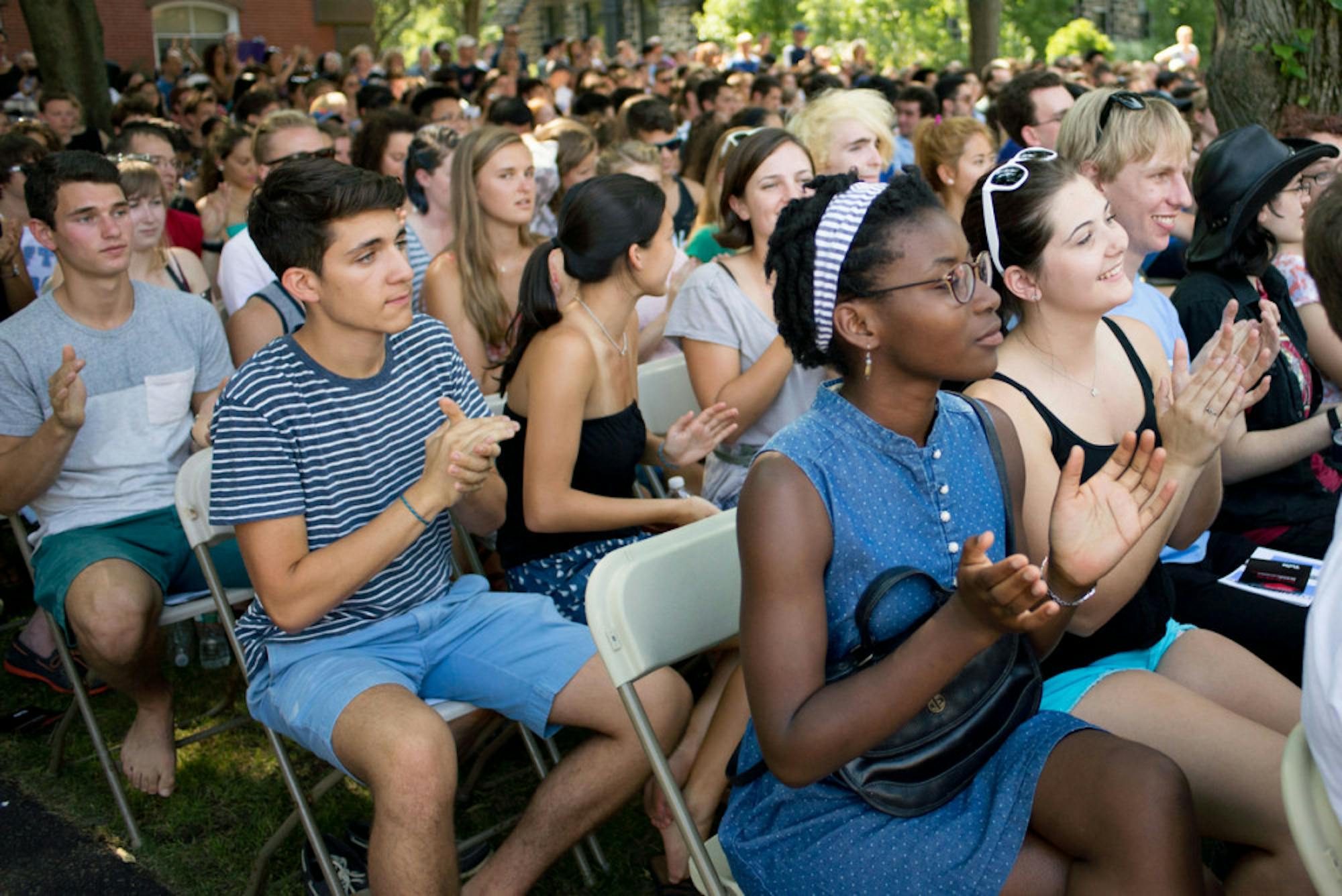Over the last several years, Tufts' popularity has risen notably and it is now considered a “hot school” by various college rankings. Consequently, more students are choosing to apply. Whether or not the admissions office is admitting more students than in the past, or whether or not more students are choosing to enroll here, however, has been debated among current students.
Junior Tzeidel Brown Eichenberg, a clinical psychology major, expressed concern over what she sees as an an increase in over-enrollment -- a phenomenon that results when a greater number of students than expected accept offers of admission -- in the past few years. Like others, Eichenberg has been convinced largely through personal experience.
“Basically, last semester I could not get into a single class that was a part of my major, except for one that count[ed] as an elective," she said. "Out of the eight classes that are required for my major, I will be stuck taking four of them as a senior. It just seems strange to me that in three years there was only enough space for me to take three required courses ... I'm not sure if this is because of over-enrollment, but I definitely think that it's an issue the psychology department needs to address as the clinical concentration becomes more popular."
However, regardless of student speculation, the administration, faculty and admissions office say that these rumors are unfounded -- they believe that an over-enrollment problem does not exist.
Dean of Admissions & Enrollment Management, Lee Coffin, spoke to the issue of over-enrollment and used statistics to clear up the misconception. According to Coffin, despite students' concerns over the issue, Tufts is actually not accepting more students than they can accommodate.
“Our enrollment is 'over' by only 13 students," he told the Daily in an email. "The new student target (freshmen and transfers) was 1,360 and Tufts enrolled 1,373 this fall ... That's the key number for purposes of determining whether Tufts is 'over-enrolled.' If the freshman deposits are higher than expected, as was the case this year, we pull back on the transfer number so that the overall enrollment remains balanced and everyone is housed."
Sophomore Adam Kaminski, who works in the admissions office, explained the idea of over-enrollment and what it means for the school.
“So there's this thing called yield, which is ... the percentage of accepted students who decide to enroll in a particular university," Kaminski said. "The admissions department cannot directly manipulate the yield, unless, of course, it accepts a higher or lower number of students in anticipation of a projected yield. But yields fluctuate and cannot always be projected with great precision. For this reason, college classes are different sizes."
Despite a lack of evidence supporting over-enrollment, students continue to see problems with overcrowding in academic spaces. Alexa Drenick, a junior environmental engineering major and computer science minor, also encountered difficulties getting into classes.
“I registered in the special wait list section [since only computer science majors can register for the normal section of some classes] for [Web Programming], and was position two on the wait list, so I was confident about getting in," Drenick said. "I went to the first day of class and the professor said that he would not let anyone in, even if people dropped. This means that the only people in the class are computer science majors; no non-major got in. I emailed the professor saying that I probably would not be able to complete my [computer] science minor if I didn't get into his class. He suggested I do a [post-baccalaureate] year in computer science, which I found ridiculous."
Apart from classes, which may just be seeing increases in interest, students have also observed overcrowding in other spaces around campus.
“The bike rack situation on campus is seriously lacking," Drenick said. "They are seriously overcrowded. I bike to Anderson in the morning, and by like 10:30, the racks are already full. I did see that they just installed another rack out front, though, which is awesome since people lock their bikes to poles and railings all over the place."
Sophomore Amanda Danielson agreed that overcrowding is becoming a real problem in all aspects of campus life, including dining halls.
"I have had to sit on the floor at some point during [a quarter] of all my college classes because there weren't enough seats for all of the enrolled students," she said. “It can also be a challenge to find seats in the dining hall at peak hours. On really popular nights, I've had to wait in line for over 15 minutes and I’ve had to sit on the stage."
Concerns over on-campus housing availability have also been discussed; however, according to a Mar. 11, 2013 article in the Daily, this factor is determined largely by the amount of rising seniors who choose to live on campus -- not necessarily an influx of freshmen.
Despite students' frustration over crowded academic spaces, Professor of Biomedical Engineering Mark Cronin-Golomb stated that class size is variable and difficult to control.
“It is impossible to predict the yield from year to year," Cronin-Golomb said. "The schools and departments adjust class sizes, number of sections and classroom assignments as best they can."
Over-enrollment at Tufts: fact or fiction?

This year’s freshman class size was essentially on target, despite over-enrollment concerns.





